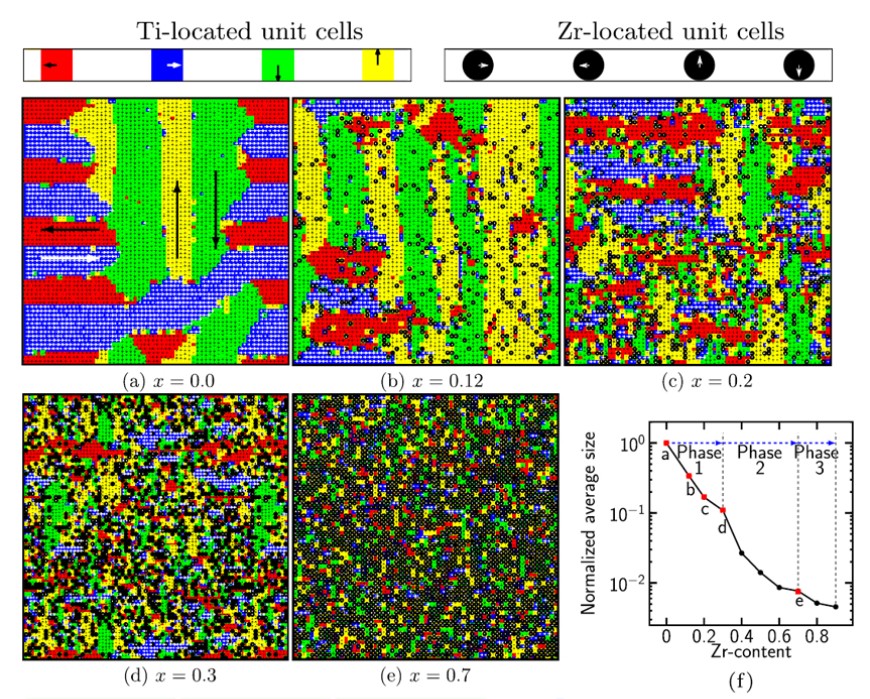State transition and electrocaloric effect of BaZr_xTi_1-xO_3: Simulation and experiment
New Publication in the “Journal of Applied Physics”
2017/01/10

Authors: Yang-Bin Ma, Christian Molin, Vladimir V. Shvartsman, Sylvia Gebhardt, Doru C. Lupascu, Karsten Albe, and Bai-Xiang Xu
We present a systematic study on the relation of the electrocaloric effect (ECE) and the relaxor state transition of BaZrxTi1−xO3 (BZT) using a combination of computer simulation and experiment. The results of canonical and microcanonical lattice-based Monte Carlo simulations with a Ginzburg-Landau-type Hamiltonian are compared with measurements of BaZrxTi1−xO3 (x = 0.12 and 0.2) samples. In particular, we study the ECE at various temperatures, domain patterns by piezoresponse force microscopy at room temperature, and the P-E loops at various temperatures. We find three distinct regimes depending on the Zr-concentration. In the compositional range 0≤x≤0.2, ferroelectric domains are visible, but the ECE peak drops considerably with increasing Zr-concentration. In the range 0.3≤x≤0.7, relaxor features become prominent, and the decrease in the ECE with Zr-concentration is moderate. In the range of high concentrations, x≥0.8, the material is almost nonpolar, and there is no ECE peak visible. Our results reveal that BZT with a Zr-concentration around x=0.12∼0.3 exhibits a relatively large ECE in a wide temperature range at rather low temperature.



